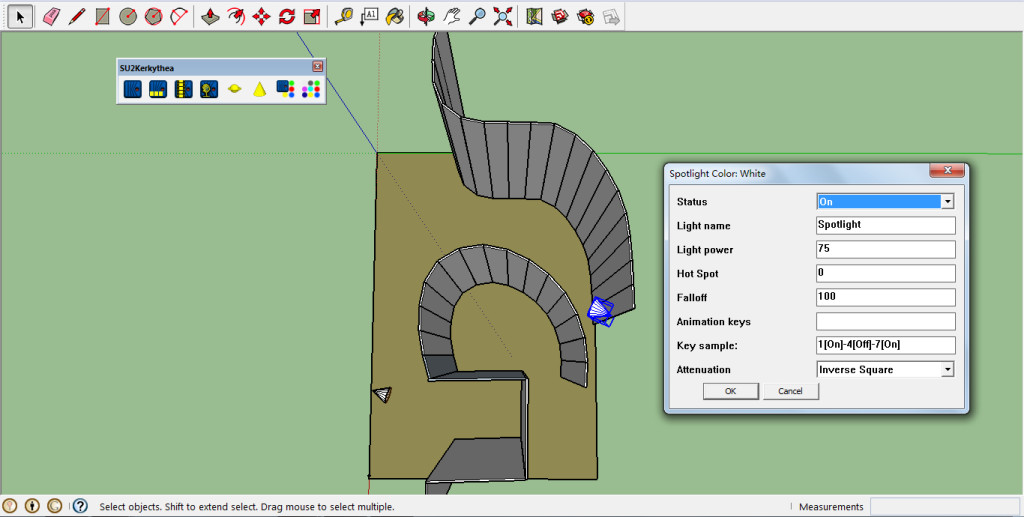
After the final three-dimensional (3D) scenography model for The Hour-Glass was finished by Larua, we started to apply lighting effects to the model and create some rendered images based on our previous background research about Edward Gordon Graig’s and W.B. Yeat’s stage designs for the Abbey theatre in Dublin (Read more in Grainne‘s and Michael‘s blog posts).
Michael, Steven, and I met on the 3th April in the attempt to achieve this technical task. In Michael’s blog post [Applying Lighting to Our Three-Dimensional Model for The Hour-Glass], he has made a clear and detailed documentation of our meeting and practical evidence. In this blog, as a support, I will provide the relevant statistics of the lighting effects in our project. The documentation is instructed by the principles in the London Charter (Denard) in an attempt to make our methodological process as transparent as possible for further reference and access.
Visual Documentation
1. Rendering software: Kerkythea rendering engine and corresponding plug-in for SketchUp Make
2. 3D Models: the screen model for The Hour-Glass and the full Hour-Glass 3D model of the Abbey theatre stage
(resources from Laura’s 3D model of Craig’s screens in situ within a 3D model of the Abbey theatre stage)
3. Light color: white (for evidence, please see Grainne‘s and Michael’s blog posts)
4. Number of lights: 2
5. Type of lights: spotlight
6. Process: 1) rendering the screen model for The Hour-Glass – to adjust lighting position, direction, and intensity
2) rendering the full Hour-Glass 3D model of the Abbey theatre stage – apply the statistics determined from the screen model
Rendering the Screen Model for The Hour-Glass
Intensity: Front-light 0.5; Back-light 75
Position & Direction: same statistics as documented for the full Hour-Glass 3D model of the Abbey theatre stage
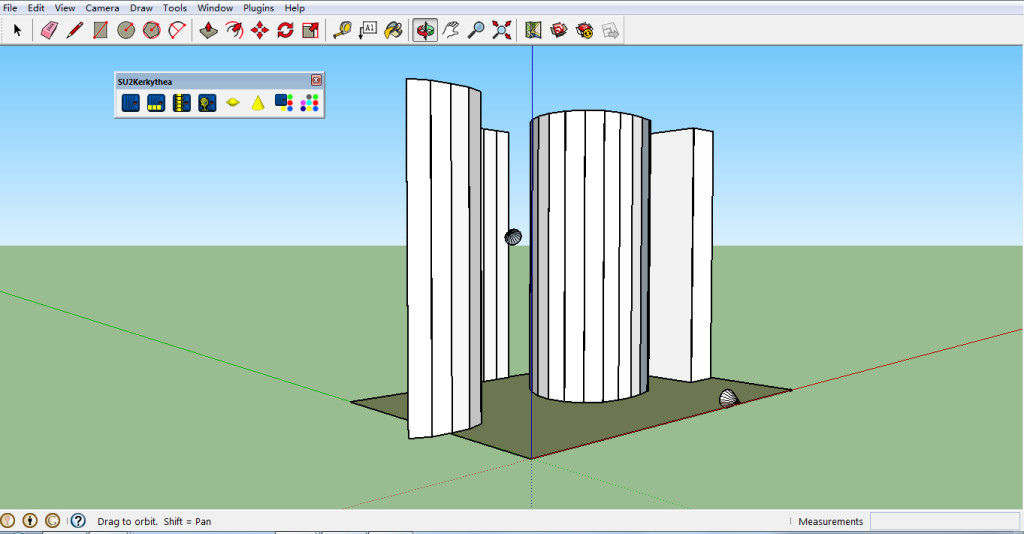
Applying two spotlights on the screen model for The Hour-Glass (1) – iSketchup using Kerkythea plug-in
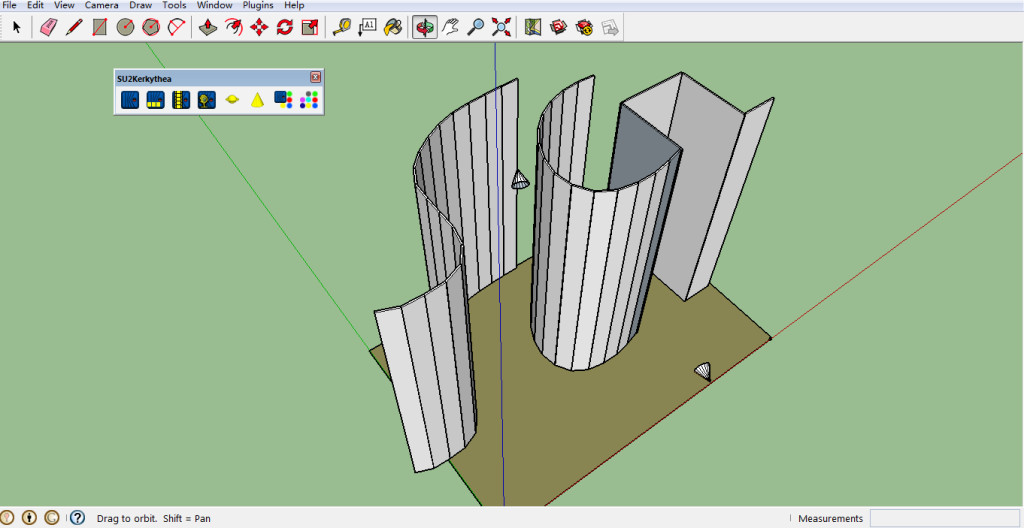
Applying two spotlights on the screen model for The Hour-Glass (2) – Sketchup using Kerkythea plug-in
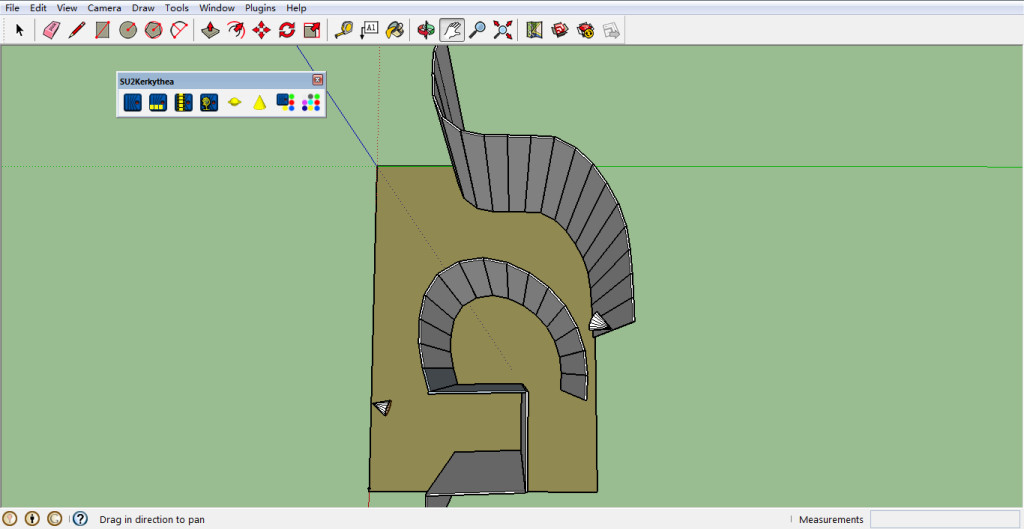
Applying two spotlights on the screen model for The Hour-Glass (3) – Sketchup using Kerkythea plug-in
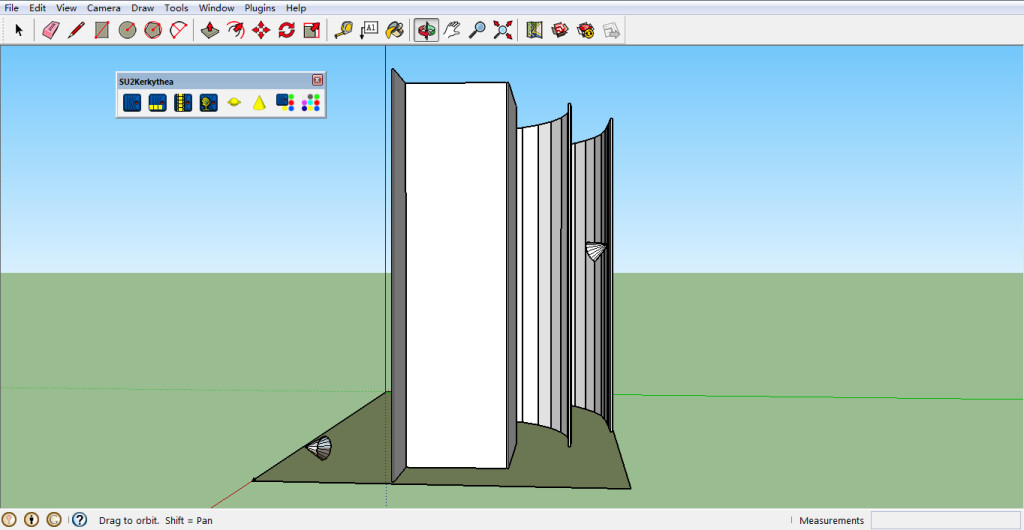
Applying two spotlights on the screen model for The Hour-Glass (4) – Sketchup using Kerkythea plug-in
Rendering the Full Hour-Glass 3D model of the Abbey theatre Stage
Front-light
Intensity: 0.5
Position and Direction as illustrated below.
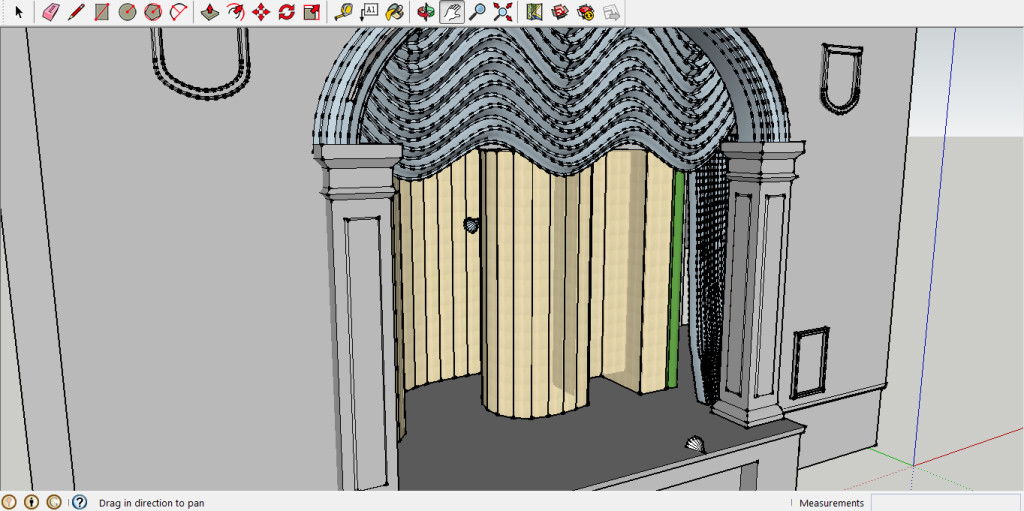
Two lights applied to the Full Hour-Glass 3D model of the Abbey theatre Stage (1) – using Kerkythea Sketchup plug-in
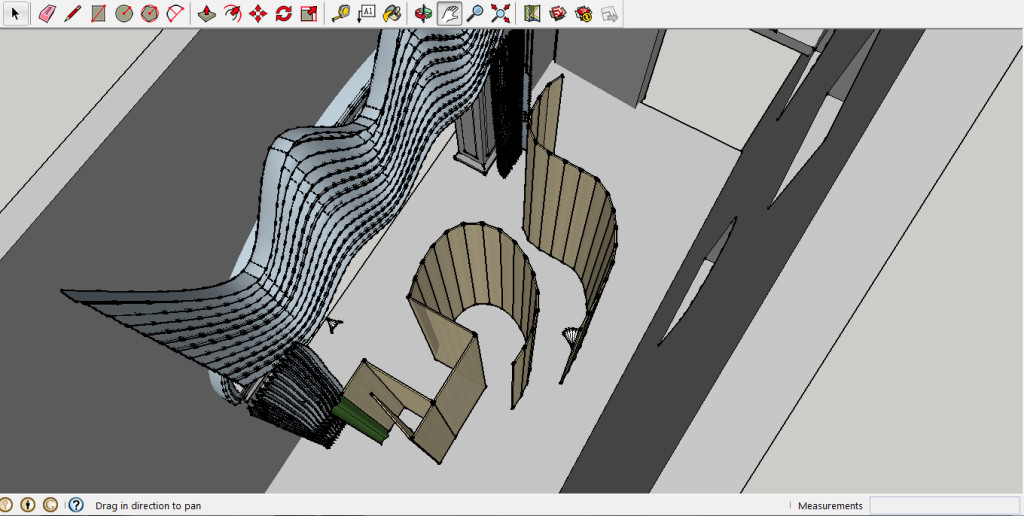
Two lights applied to the Full Hour-Glass 3D model of the Abbey theatre Stage (2) – using Kerkythea Sketchup plug-in
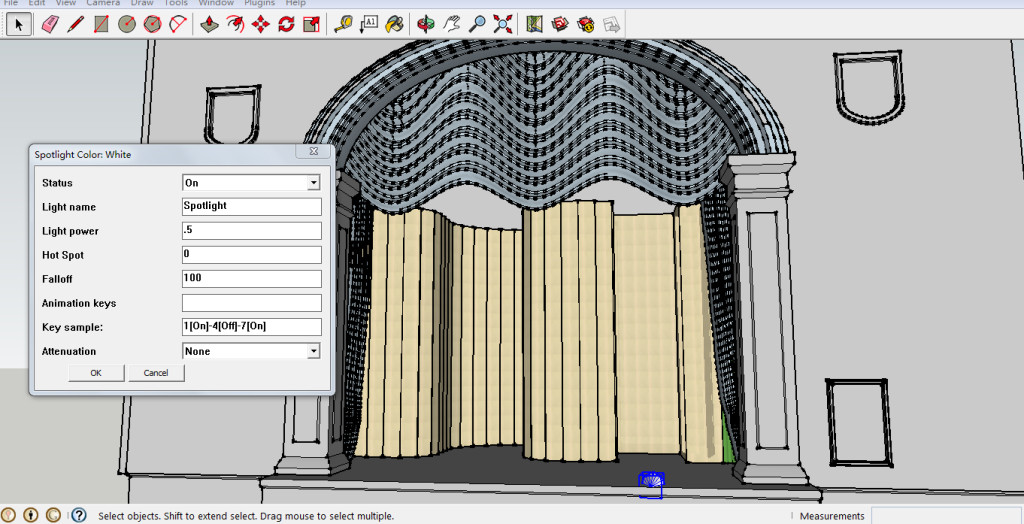
Intensity of the front-light in the Full Hour-Glass 3D model of the Abbey theatre Stage – using Kerkythea Sketchup plug-in
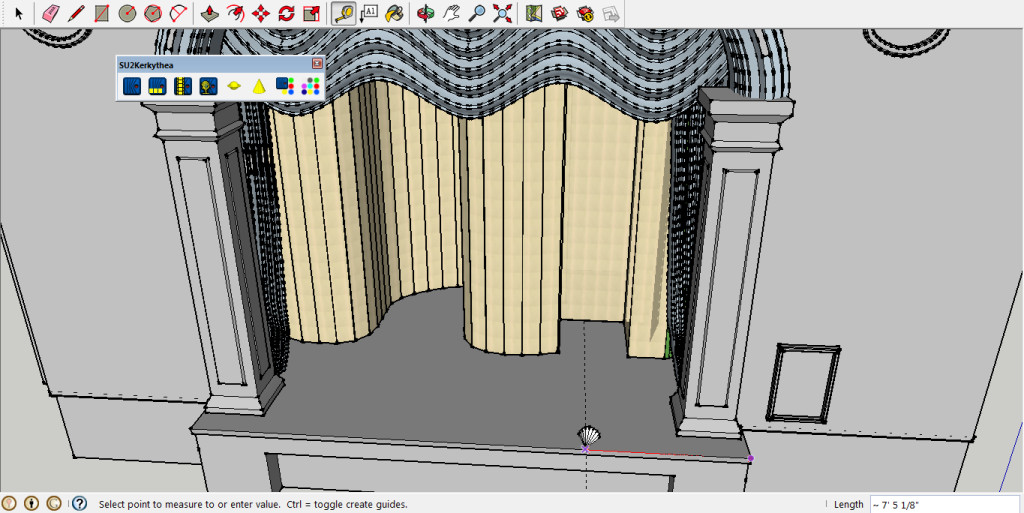
Position of the front-light in the Full Hour-Glass 3D model of the Abbey theatre Stage (7’5 – from the right edge of the stage) – using Kerkythea Sketchup plug-in
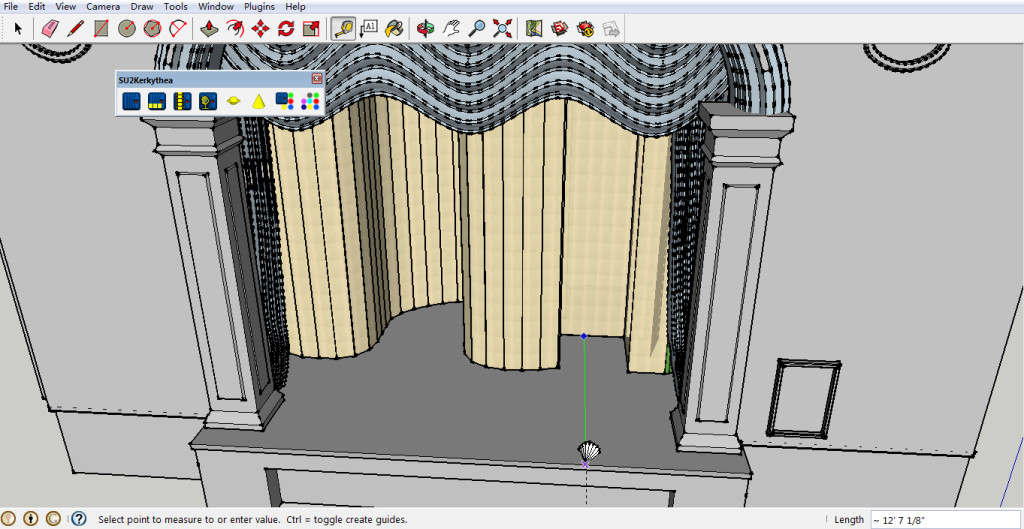
Position of the front-light in the Full Hour-Glass 3D model of the Abbey theatre Stage (12’7 – from the screen vertically) – using Kerkythea Sketchup plug-in
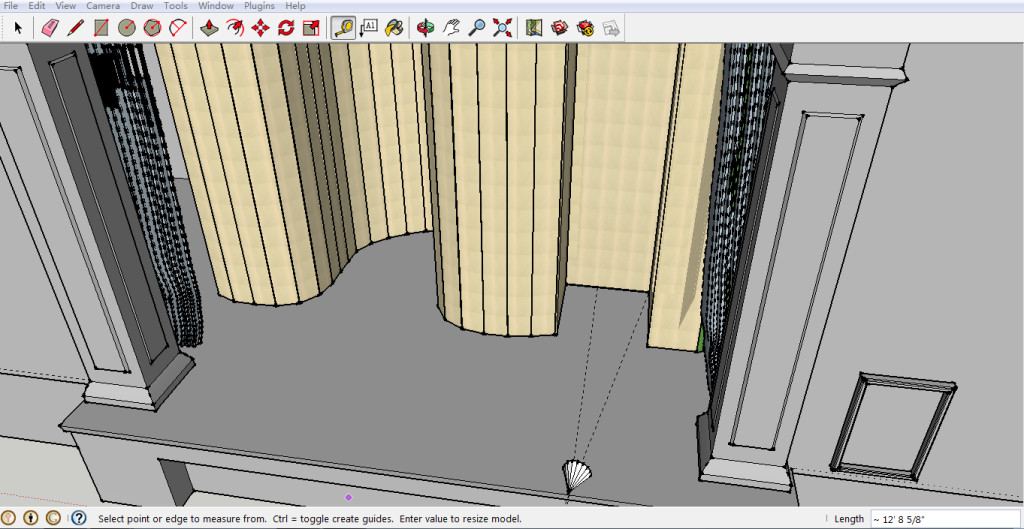
Direction of the front-light in the Full Hour-Glass 3D model of the Abbey theatre Stage (pointing at the screen on the floor) – using Kerkythea Sketchup plug-in
Back-light
Intensity: 45 (As we applied the back-light in the Abbey Theatre model, the previous tested intensity – 75 became too bright, so we decided to cut it down to 45)
Position and Direction as illustrated below:
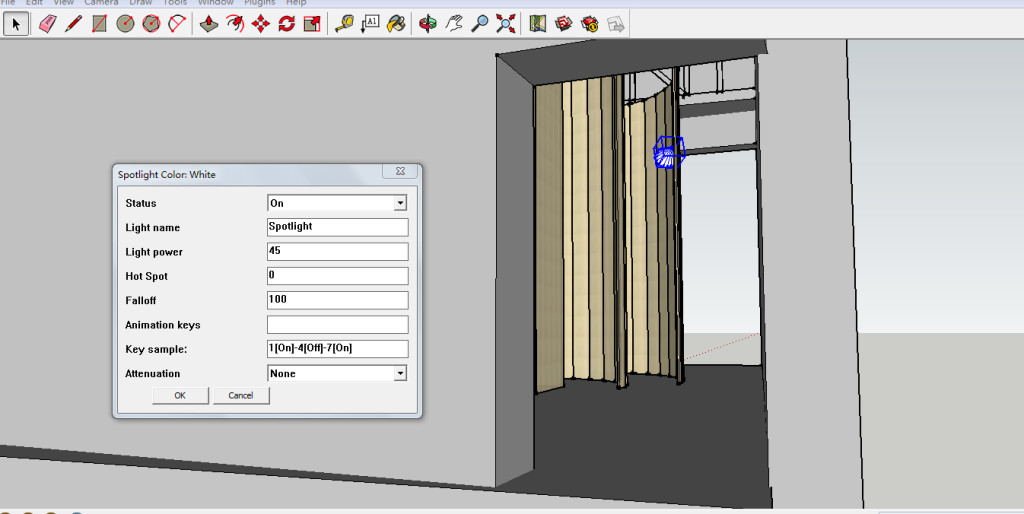
Intensity of the back-light in the Full Hour-Glass 3D model of the Abbey theatre Stage (1) – using Kerkythea Sketchup plug-in
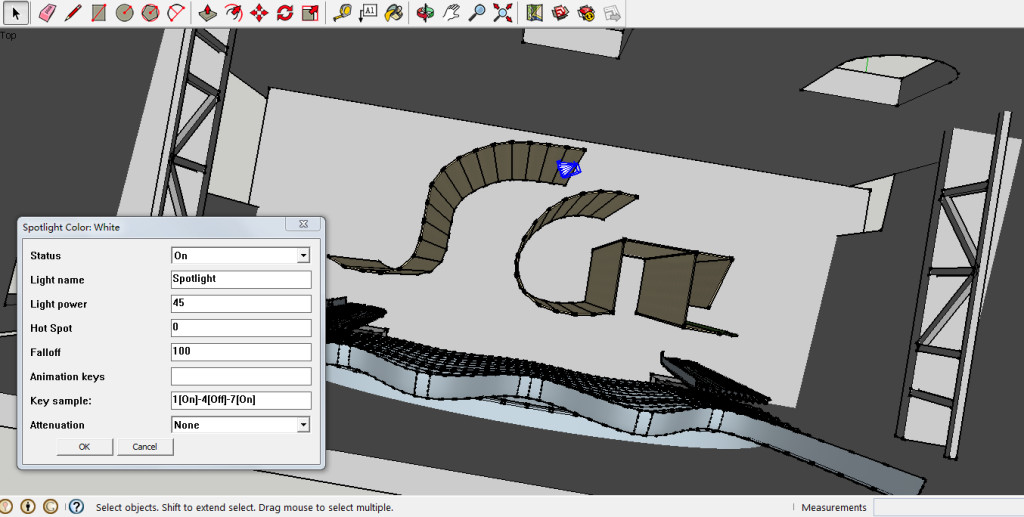
Intensity of the back-light in the Full Hour-Glass 3D model of the Abbey theatre Stage (2) – using Kerkythea Sketchup plug-in
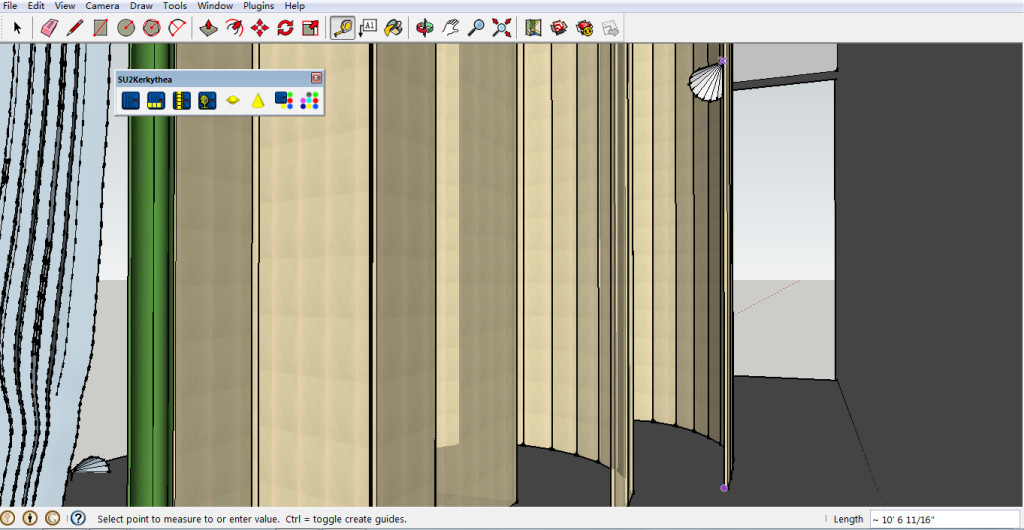
Position of the back-light in the Full Hour-Glass 3D model of the Abbey theatre Stage (10’6 – height from the stage) – using Kerkythea Sketchup plug-in
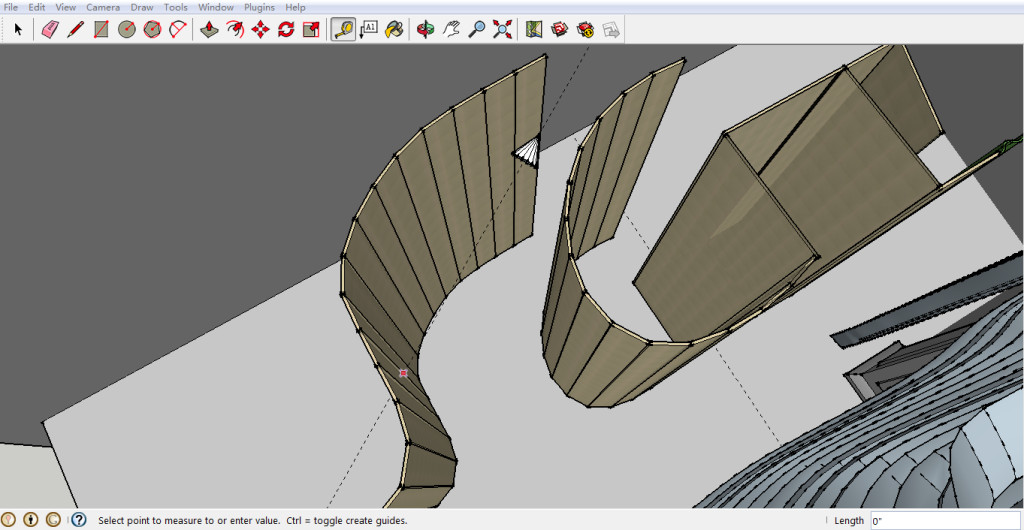
Direction of the back-light in the Full Hour-Glass 3D model of the Abbey theatre Stage (Starting point: 10’6 – height from the stage; pointing at the middle of the scene) – using Kerkythea Sketchup plug-in
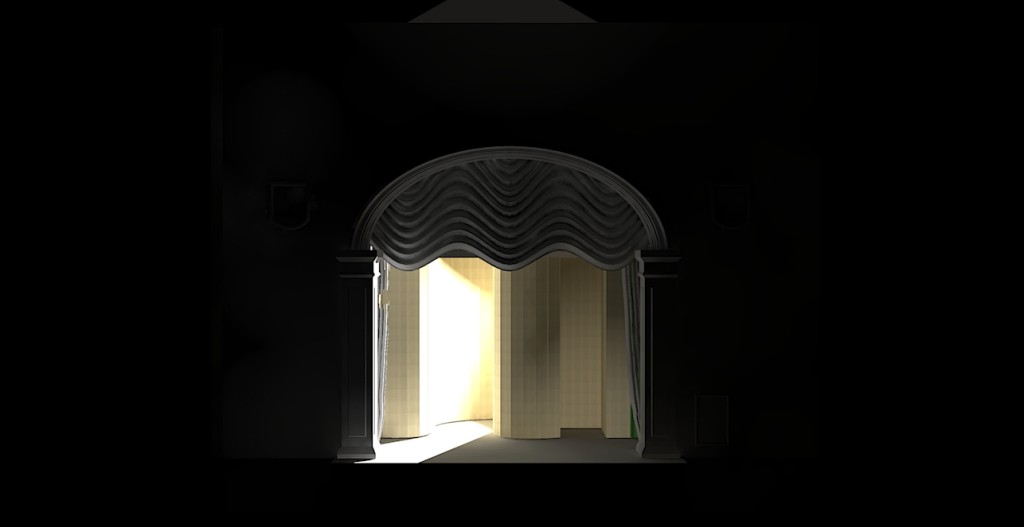
Rendered image for the Full Hour-Glass 3D model of the Abbey theatre Stage with two lights applied (1)- using Kerkythea
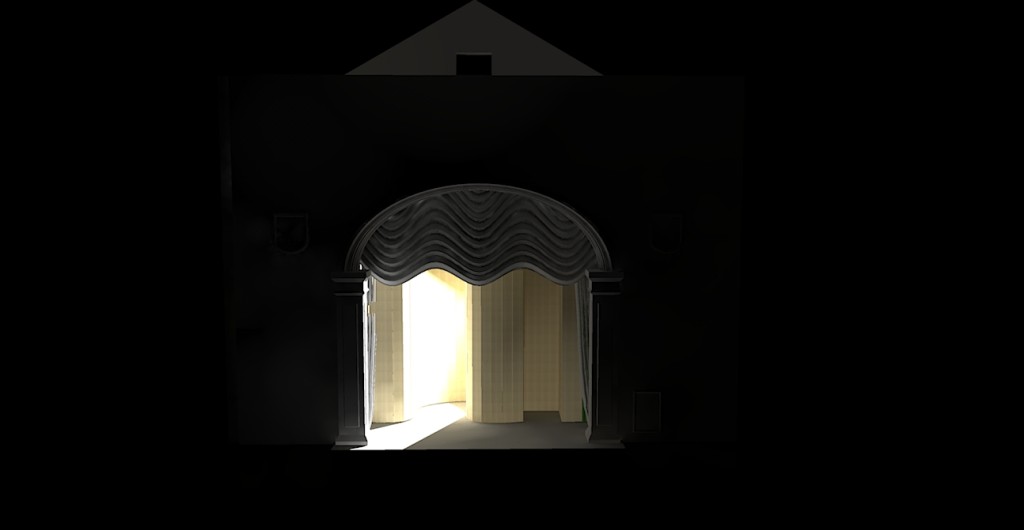
Rendered image for the Full Hour-Glass 3D model of the Abbey theatre Stage with two lights applied(2) – using Kerkythea
Conclusions
This is our first practice on applying lighting to a 3D model and create rendered images using Kerkythea. We have to admit that our skills are still not very mature, but we are getting confidence when seeing the final rendered images are able to match our project aims. The lighting settings would be more accurate if we could set up real models with illumination facilities. Moreover, it is meaningful that we strategically explore and implement the best practice visual activities to the humanities project and documented the process, following the instruction of the London Charter.


